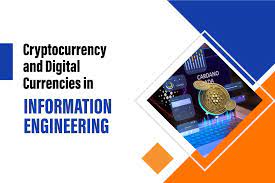
13. Digital Currencies Beyond Cryptocurrency
Digital Currencies Beyond Cryptocurrency
Introduction
The evolution of digital currencies beyond cryptocurrency has transcended the boundaries of conventional cryptocurrencies, introducing a diverse array of monetary innovations. Beyond the well-known Bitcoin and Ethereum, the financial landscape is witnessing the emergence of Central Bank Digital Currencies (CBDCs), stablecoins, digital wallets, smart contracts, and transformative cross-border payment solutions. This blog aims to provide a comprehensive exploration of the multifaceted world of digital currencies, shedding light on their diverse forms, use cases, and the transformative impact they wield on the future of finance.Digital Currencies Beyond Cryptocurrency Digital Currencies Beyond Cryptocurrency Digital Currencies Beyond Cryptocurrency Digital Currencies Beyond Cryptocurrency Digital Currencies Beyond Cryptocurrency Digital Currencies Beyond Cryptocurrency Digital Currencies Beyond Cryptocurrency
1. Central Bank Digital Currencies
In recent years, Central Bank Digital Currencies (CBDCs) have garnered attention as governments and central banks worldwide explore the digitization of their national currencies. Unlike decentralized cryptocurrencies, CBDCs are issued and regulated by central authorities, aiming to combine the benefits of digital transactions with the stability associated with traditional fiat currencies. This section will delve into various CBDC initiatives globally, exploring the motivations behind their adoption, the strategies employed for their implementation, and the potential implications for the broader financial ecosystem.
2. Stablecoins and Pegged Currencies
Stablecoins have emerged as a critical component of the digital currency landscape, offering a bridge between the volatility of cryptocurrencies and the stability of traditional fiat currencies. Pegged to a reserve of assets such as fiat currency, commodities, or other cryptocurrencies, stablecoins aim to maintain a consistent value. This segment of the blog will explore the different types of stablecoins, their unique use cases, and their role in facilitating digital transactions while mitigating the price volatility commonly associated with cryptocurrencies.
3. Digital Wallets and Payment Systems
The rise of digital currencies has paved the way for the development of sophisticated digital wallets and payment systems. These systems go beyond basic transactions, offering features like contactless payments, peer-to-peer transfers, and seamless integration with other financial services. In this part, we will examine the evolution of digital wallets, exploring how they contribute to financial inclusion, streamline transactions, and play a pivotal role in the ongoing digitization of the global economy.
4. Smart Contracts and Programmable Money
At the intersection of digital currencies and blockchain technology lies the concept of smart contracts, enabling the creation of programmable money. This segment will delve into how digital currencies can be programmed to execute specific actions automatically when predefined conditions are met. Beyond simple transactions, smart contracts open avenues for complex financial arrangements, decentralized applications (DApps), and automated governance, revolutionizing the way financial agreements are executed and enforced.
5.Cross-Border Payments and Financial Inclusion
Digital currencies are poised to revolutionize cross-border payments, offering a faster and more cost-effective alternative to traditional banking systems. This section will explore how digital currencies facilitate financial inclusion by providing banking services to the unbanked and underbanked populations, particularly in regions with limited access to traditional financial infrastructure. We will discuss the potential of digital currencies to bridge gaps and empower individuals who have been historically excluded from the formal financial sector.
6. Privacy Coins and Anonymity
Privacy coins, such as Monero and Zcash, have emerged to address concerns about the transparency of transactions associated with many cryptocurrencies. This section will explore how these digital currencies prioritize user privacy by employing advanced cryptographic techniques, allowing users to transact with enhanced anonymity. The blog will discuss the implications of privacy coins for financial privacy and potential regulatory considerations.
7. Tokenization of Assets
The concept of tokenization involves representing real-world assets, such as real estate or art, as digital tokens on a blockchain. This segment will delve into how the tokenization of assets can democratize access to investments, increase liquidity, and streamline the process of transferring ownership. The blog will discuss the transformative potential of asset tokenization in traditional financial markets.
8.Environmental Impact and Sustainable Digital Currencies
As the environmental impact of traditional cryptocurrency mining practices comes under scrutiny, this section will explore the emergence of sustainable digital currencies. Some newer digital currencies are designed to be more energy-efficient, using consensus mechanisms that are environmentally friendly. The blog will discuss how the industry is responding to concerns about the carbon footprint of digital currencies and the push towards greener alternatives.
Conclusion
The world of digital currencies stretches far beyond the realm of well-known cryptocurrencies, encompassing a spectrum of innovations that hold the potential to redefine the future of money. Navigating this digital frontier requires an understanding of the diverse forms of digital currencies and their evolving roles, as they collectively shape the ongoing transformation of the financial landscape.
Leave a Reply